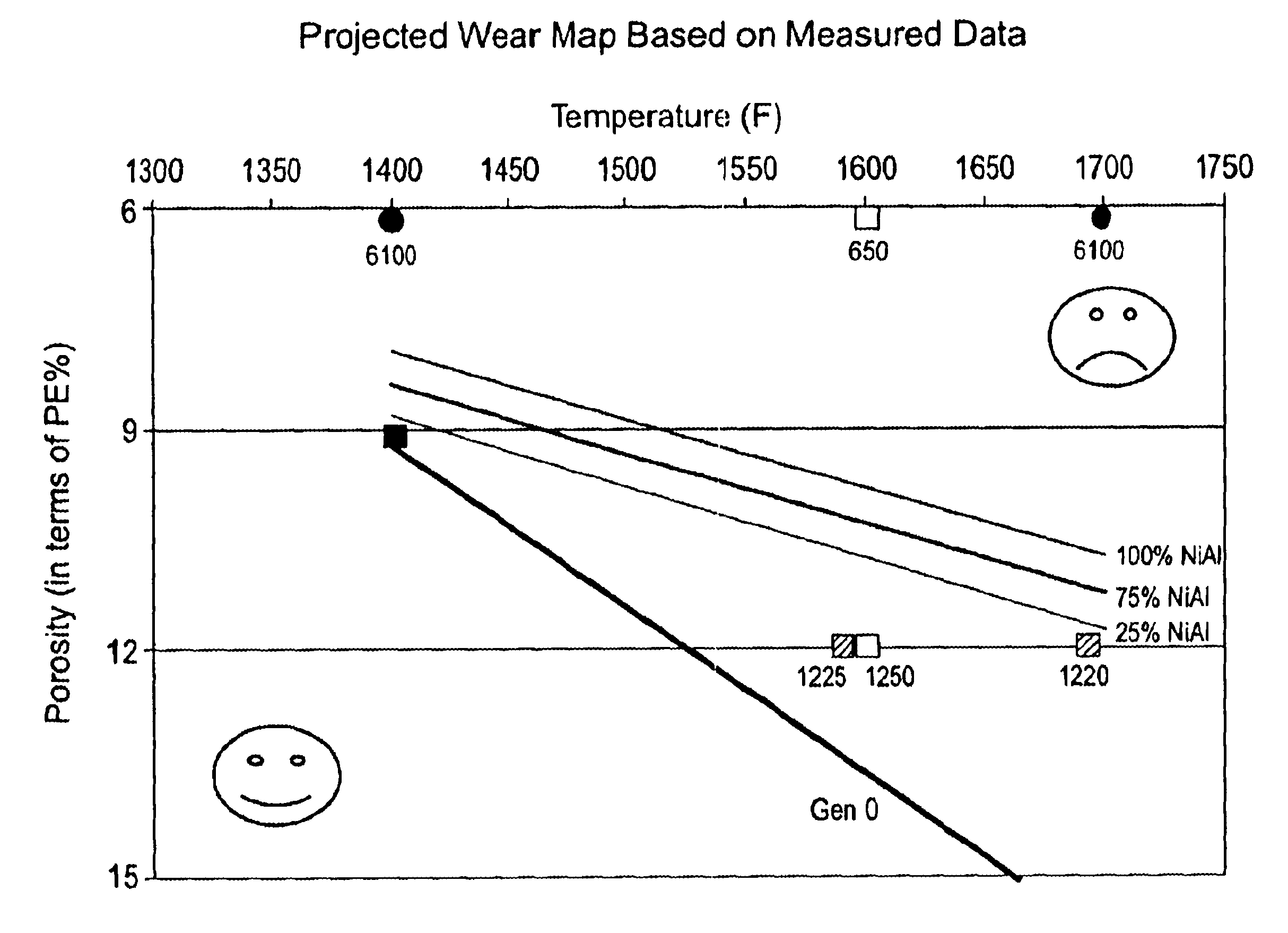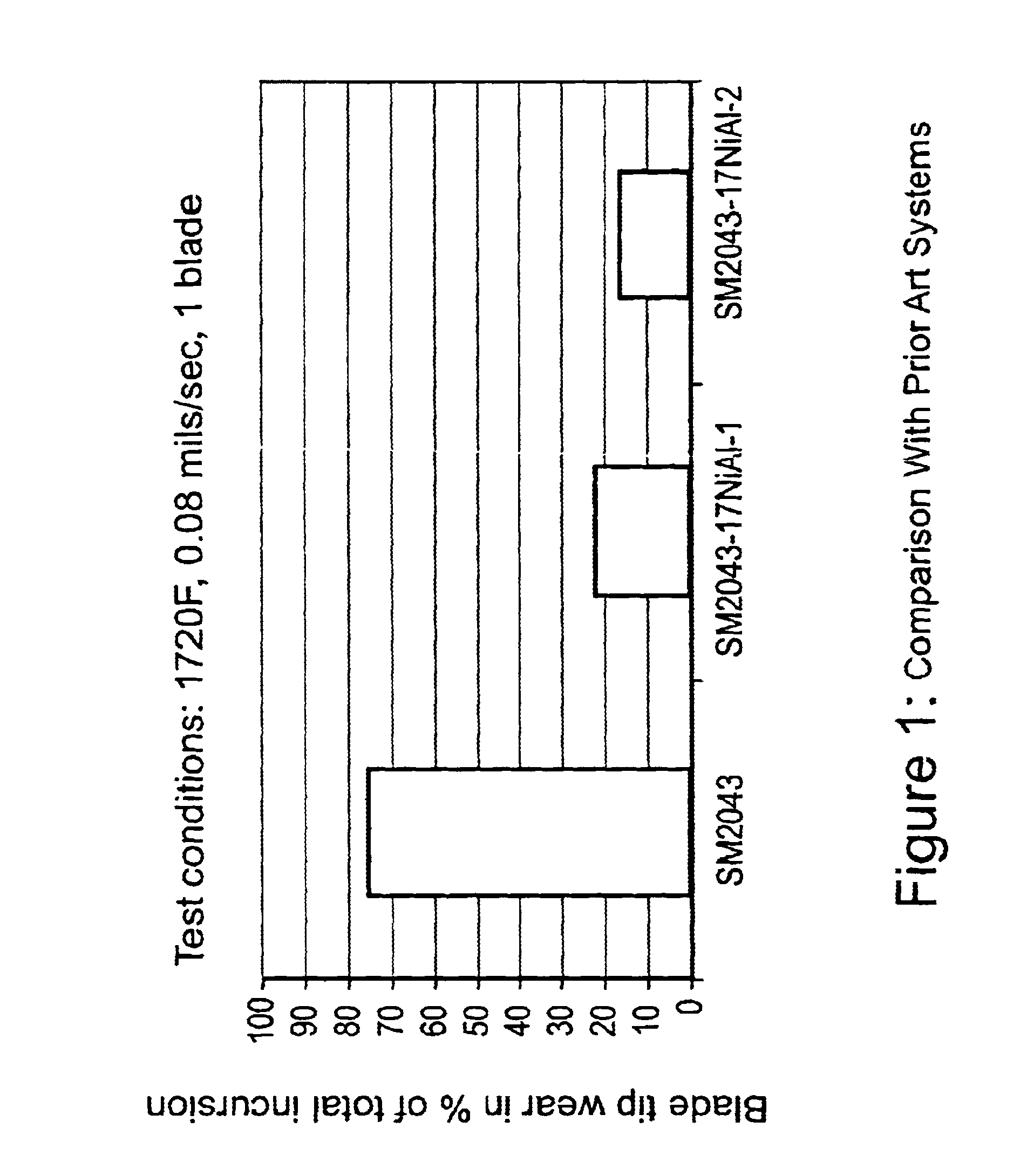High temperature abradable coating for turbine shrouds without bucket tipping
a technology of abradable coating and turbine shroud, which is applied in the direction of manufacturing tools, transportation and packaging, and slurping apparatus, etc. it can solve the problems of oxidation life of such coatings, damage to bucket tips, and non-uniform wear of shroud coatings, so as to improve the overall efficiency of gas turbines and reduce hot gas leakage
- Summary
- Abstract
- Description
- Claims
- Application Information
AI Technical Summary
Benefits of technology
Problems solved by technology
Method used
Image
Examples
Embodiment Construction
As noted above, the preferred embodiment of the present invention involves a unique balance of two competing coating properties, namely (1) abradability and (2) oxidation resistance. Abradable coatings according to the invention having components (1), (2) and (3) above exhibit improved abradability at high temperature, primarily as a result of the combination of MCrAlY, .beta.-NiAl and a polymer such as polyester as the fugitive polymer to create the desired level of porosity for abradability. The preferred compositions thus use a lower level of polyester additive than conventional coatings, i.e., in the range of about 12% by weight.
Thus, an important design feature of the present invention involves the use of compositions exhibiting increased brittleness (and thus improved abradability) at the higher operating temperatures. The increase in brittleness is achieved without a measurable increase in porosity of the abradable coating. That is, it has now been found that the addition of ...
PUM
| Property | Measurement | Unit |
|---|---|---|
| temperatures | aaaaa | aaaaa |
| thickness | aaaaa | aaaaa |
| operating temperatures | aaaaa | aaaaa |
Abstract
Description
Claims
Application Information
 Login to View More
Login to View More - R&D
- Intellectual Property
- Life Sciences
- Materials
- Tech Scout
- Unparalleled Data Quality
- Higher Quality Content
- 60% Fewer Hallucinations
Browse by: Latest US Patents, China's latest patents, Technical Efficacy Thesaurus, Application Domain, Technology Topic, Popular Technical Reports.
© 2025 PatSnap. All rights reserved.Legal|Privacy policy|Modern Slavery Act Transparency Statement|Sitemap|About US| Contact US: help@patsnap.com



